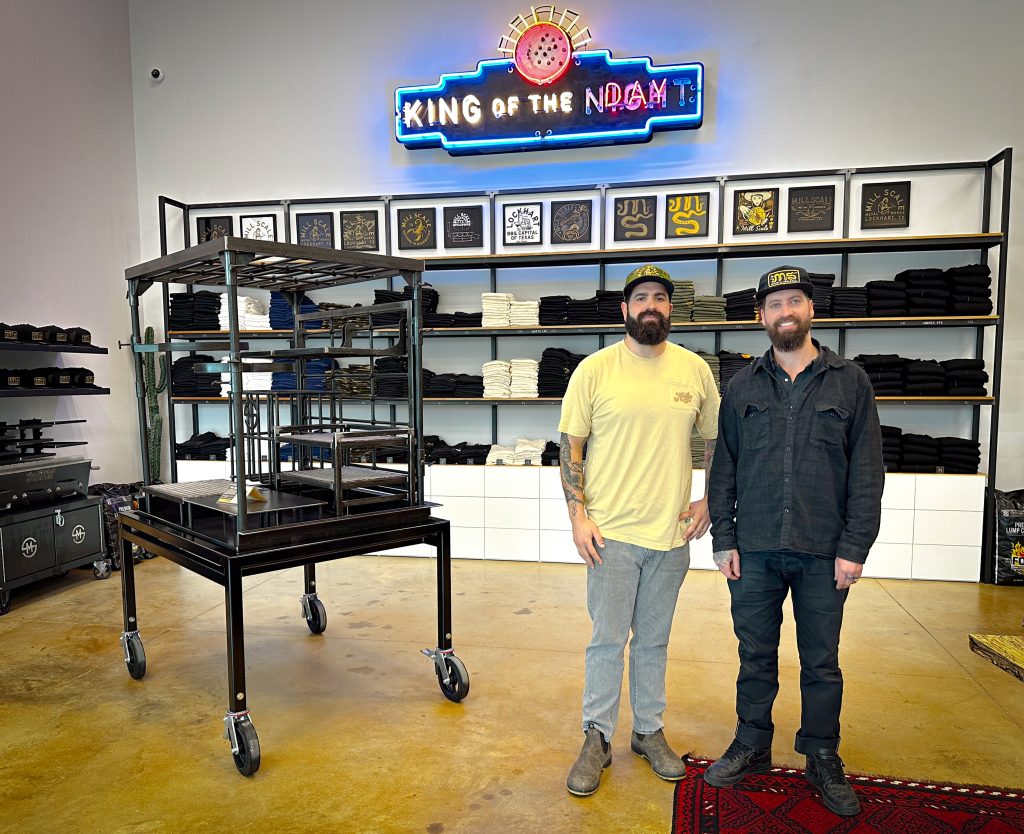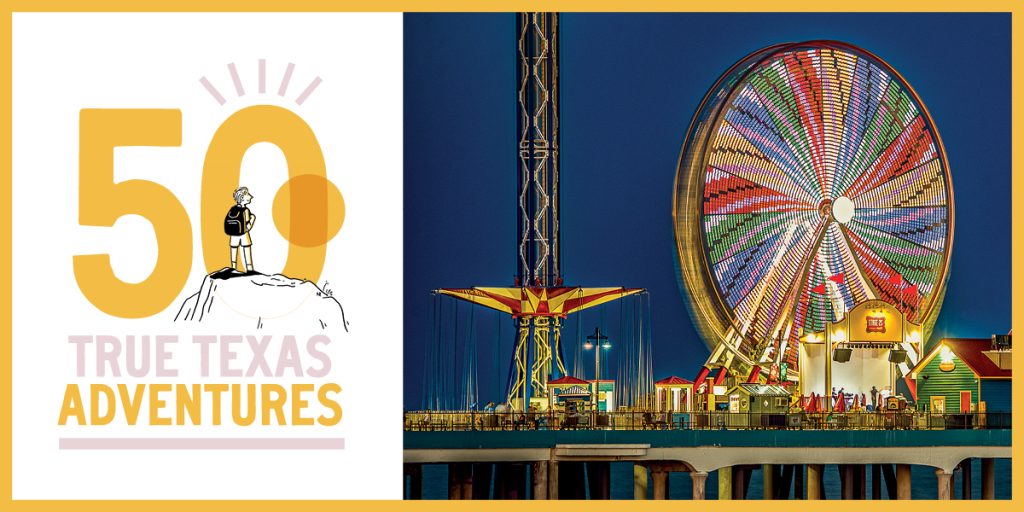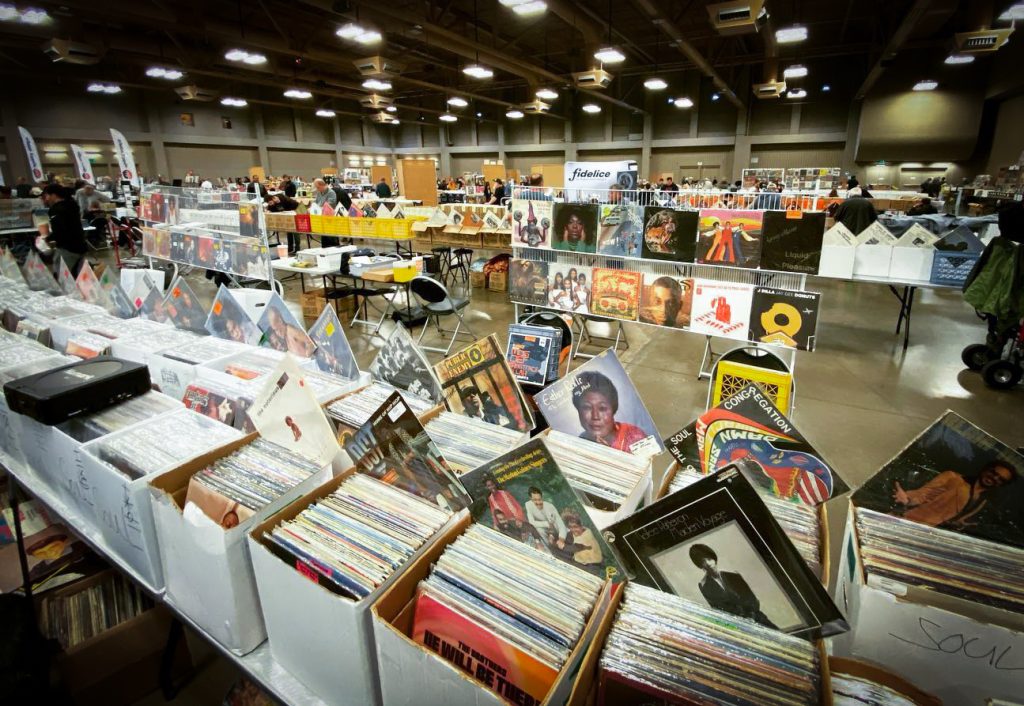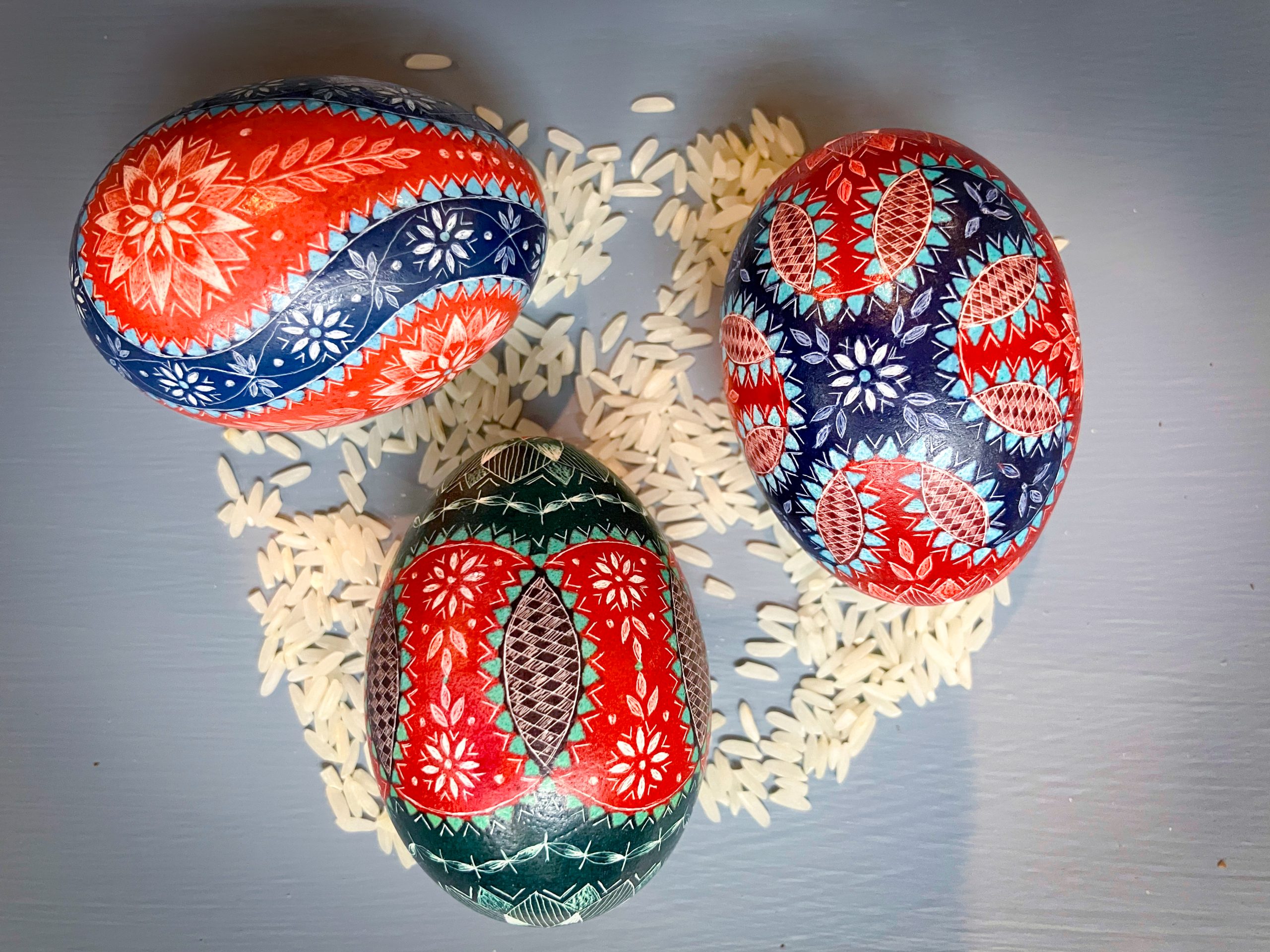
Wendish eggs are decorated with elaborate designs for the Easter holiday. Photo by Anthony Head
On the eve of Jan. 25, students at St. Paul Lutheran School in Serbin, south of Giddings, set out empty plates on windowsills and fence posts as part of an annual tradition called the Birds’ Wedding. According to folklore, a “wedding” takes place in secret at night between the bride (a magpie) and groom (a raven). By morning, the plates appear filled with candies, cookies, and pastries—tokens of celebration left by the birds. At school, students dress in wedding costumes and assume the roles of the birds, acting out their version of this avian matrimonial ceremony.
This custom commemorates the beginning of bird-mating season and belongs to the Wends, the descendants of central European Slavic groups known also as the “Sorbs”—with a distinct language and culture—that settled in present-day eastern Germany by the end of the sixth century. In September 1854, more than 500 Wendish Lutherans sailed from Europe to Texas aboard the Ben Nevis seeking religious liberty. The ship docked in Galveston that December, which makes this year the 170th anniversary of the single-largest migration of Wends in history.
In early 1855, the Wends established the Low Pin Oak Settlement as their mother colony in Texas, changing the name to Serbin, which means “Sorbian land,” in 1860. Wend migration continued throughout the 19th century as Serbin flourished, although the same area between Houston and Austin grew faster with new German arrivals and English-speaking settlers. According to In Search of a Home: Nineteenth-Century Wendish Immigration by George R. Nielsen, “the Wends traded their language for German before they adopted English,” and within 100 years of landing in Texas, the Wends were almost thoroughly assimilated into their new homeland.
“Growing up, we knew we were Wends, but the language was considered old-fashioned,” says Marian Wiederhold, who has lived all 74 years of her life in Serbin. “I never even heard my grandparents speak Wendish.”
Wiederhold’s great-great-grandfather and great-grandfather came to Texas on the Ben Nevis, a bit of family history she says she didn’t appreciate until she was in her 40s. “Now that my generation is grown, there’s been a renewal of interest,” she says. “We try to promote our heritage.”
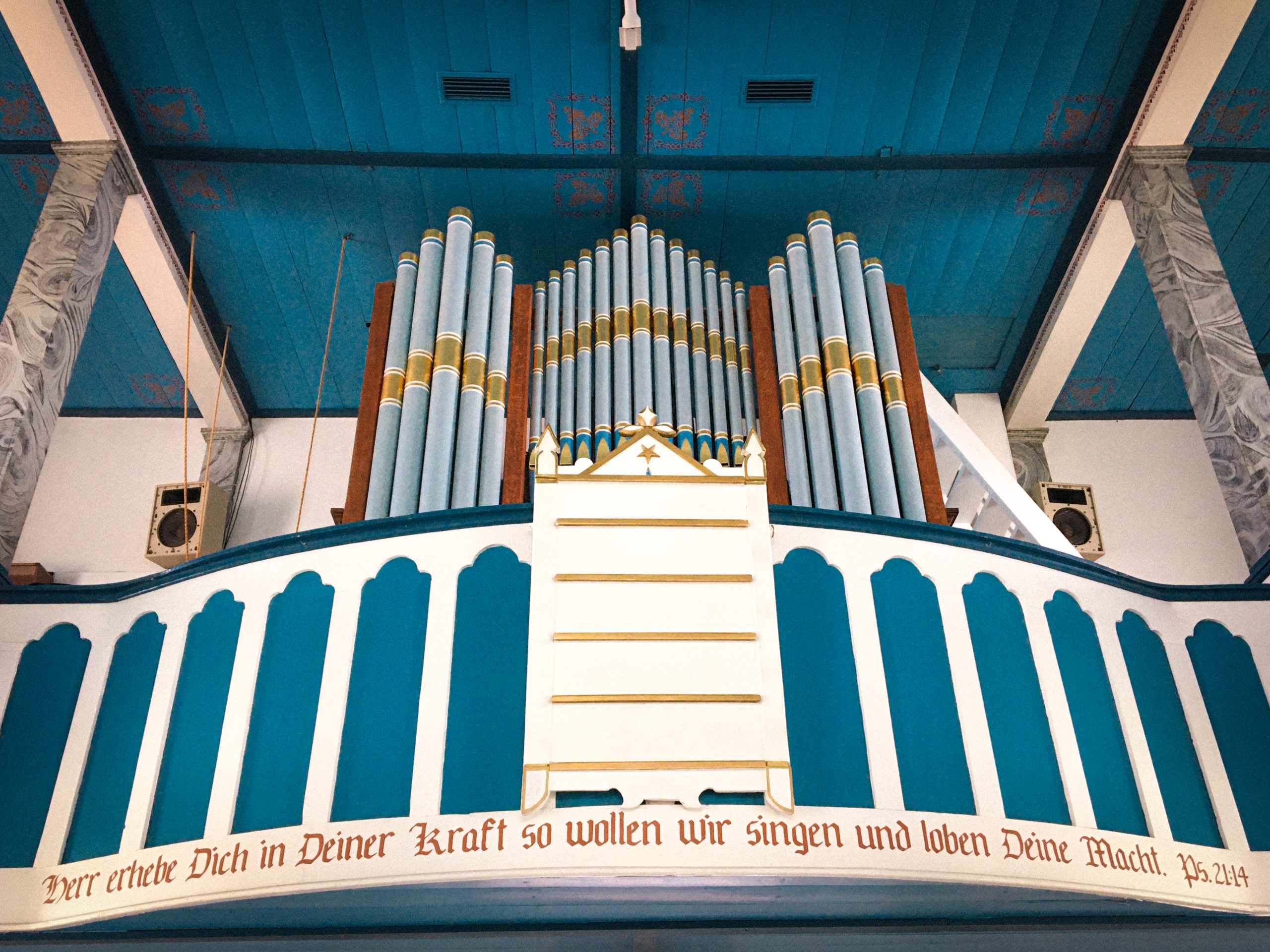
The St. Paul Lutheran Church’s pipe organ from 1904 is painted in shades of gold and blue, the favorite color of the Wends. Photo by Anthony Head
Serbin is now an unincorporated community with no fluent Wendish speakers, but it continues to be the heart of Wendish culture for Texas and the rest of the country. In addition to continuing the Birds’ Wedding tradition, some Serbin Wends spend the year making decorative eggs for Easter. This time-honored craft begins by applying layers of color to eggshells and then meticulously scratching the surfaces to create elaborate designs as colorful as Texas in springtime. This is also the place where you can find the Wendish coffeecake and egg noodles.
Such traditions are kept alive because of the dedication of the Texas Wendish Heritage Society, a nonprofit organization that began in 1972 and opened Serbin’s Texas Wendish Heritage Museum. In addition to displays of Wendish Easter eggs, the museum includes a 19th-century wooden shipping crate and other artifacts from the Ben Nevis; exhibits of Wendish wedding culture like the braška (the male who customarily serves as wedding organizer) and a black bridal gown (reminding the bride of life’s hardships); and a mask of Rumpliche, a sinister Christmastime character from Wendish folklore who threatens to whip naughty children and even stuff them into his bag and take them away.
“The Wendish people in this area have preserved a lot of information and artifacts for us,” says Mandy Kaspar, who has worked at the museum for two years. “Our Lillie Moerbe Caldwell Memorial Library is also popular for people wanting to do genealogy research.”
St. Paul Lutheran Church, located on County Road 211 a short distance from the museum, is one of the most important landmarks for Serbin’s Wendish population. The two-story Gothic building was based on churches found in Klitten and Weisgerdorf in Germany and has been in continuous use since 1871. In addition to being the mother church of Texas Lutheran Wends (Missouri Synod), it’s one of the state’s historic painted churches.
Inside St. Paul, the ceiling and balcony panels are vibrant marine blue. The magnificent pipe organ from 1904 is painted in shades of blue and gold while multicolored stenciling can also be found throughout the interior.
“Growing up in Serbin we were told that blue is the Wends’ favorite color, but I don’t know where that came from,” Wiederhold says, although it’s her understanding that the Birds’ Wedding (or in Wendish, Ptači kwas) is a custom that was definitely brought to Texas by the Wends. “I think the program in [St. Paul School] is a good way to make the children aware of their heritage.”
Visitors can see a children’s reenactment of the Birds’ Wedding at the annual homecoming picnic in May and the Wendish Fest in September.
These events are held at the museum complex and church picnic grounds, located six miles south of Giddings at Farm-to-Market Road 2239 and County Road 212.
Serbin Homecoming Picnic (May 26)
The 130th annual homecoming picnic begins with church services at St. Paul and continues with a children’s program of the Birds’ Wedding, games, music, and barbecue.
Wendish Fest (Sept. 22)
The festival, marking its 36th year in 2024, raises money for the Texas Wendish Heritage Museum and welcomes over 1,000 visitors for a day of cultural exhibits, live music, a Birds’ Wedding reenactment, games, and Wendish food.
Old Tyme Wendish Sunday (TBD in October)
Celebrate Wendish culture with a church service and bible study at St. Paul Lutheran Church followed by food, games, and a Christmas market at the Texas Wendish Heritage Museum.
Texas Wendish Heritage Museum
Contact the museum for class dates to learn how to decorate Easter eggs and make Wendish egg noodles.
Open Tue-Sat 1-5 p.m. 1011 CR 212, Giddings.
979-366-2441; texaswendish.org/museum
St. Paul Lutheran Church
Contact the church office for tour information.
1572 CR 211, Giddings. 979-366-9650; stpaulserbin.org
